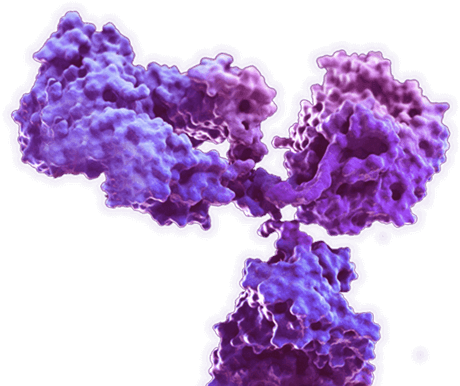AibGenesis™ Mouse Anti-ompA Antibody (CBMOAB-1920YC)
Cat: CBMOAB-1920YC

Certificate of Analysis Lookup
To download a Certificate of Analysis, please enter a lot number in the search box below. Note: Certificate of Analysis not available for kit components.
Lot Number
To download a Certificate of Analysis, please enter a lot number in the search box below. Note: Certificate of Analysis not available for kit components.
Lot Number
- Product List
- Specifications
- Application Information
- Target
- QC data
| Sub Cat | Clonality | Species Reactivity | Application | Clone | Conjugate | Size | |
| CBMOAB-1920YC | Monoclonal | E. coli (Escherichia coli ), Chlamydia Trachomatis, E. coli, Zebrafish (Danio rerio) | WB, ELISA | MO1920YC | 100 µg | ||
| CBMOAB-90601FYA | Monoclonal | Zebrafish (Danio rerio) | WB, ELISA | MO90601FYA | 100 µg | ||
| MOFAB-132W | Monoclonal | Chlamydia Trachomatis | ELISA | WCL12 | 100 µg | ||
| MOFY-0223-FY19 | Monoclonal | E. coli | WB, ELISA | 100 µg |
Specifications
| Host species | Mouse (Mus musculus) |
| Species Reactivity | E. coli (Escherichia coli ), Chlamydia Trachomatis, E. coli, Zebrafish (Danio rerio) |
| Clone | MO1920YC |
| Specificity | This antibody binds to Escherichia coli K-12 ompA. |
| Format | Liquid or Lyophilized |
| Storage | Store at 4°C: short-term (1-2weeks) Store at -20°C: long-term and future use |
| Purity | > 90% was determined by SDS-PAGE |
| Purification | Purified with Protein A or G affinity chromatography |
Application Information
| Application | WB, ELISA |
| Application Notes | ELISA: 1:1000-1:3000 Other applications are to be developed. The optimal dilution should be determined by the end user. |
Target
| Introduction | With TolR probably plays a role in maintaining the position of the peptidoglycan cell wall in the periplasm (Probable). Plays a role in resistance to environmental stress, and a role in outer membrane functionality and cell shape (PubMed:11906175, PubMed:361695). Non-covalently binds peptidoglycan (PubMed:25135663) (Probable). Acts as a porin with low permeability that allows slow penetration of small solutes (PubMed:1370823, PubMed:20004640, PubMed:21069910). A very abundant protein, there can be up to 210,000 OmpA molecules per cell (PubMed:24766808). Reconstitution in unilamellar lipid vesicles shows only about 3% of the protein is in an open conformation, which allows diffusion of L-arabinose at a rate comparable to that of OmpF porin; the pores interconvert very rarely (PubMed:7517935). Native and reconstituted protein forms ion channels with 2 conductance states of (50-80 pS) and (260-320 pS); the states are interconvertible in this study. Interconversion requires refolding of the periplasmic domain (PubMed:10636850). Small pores are converted into large pores by increasing temperature; in this model the C-terminal periplasmic domain forms 8 more beta sheets to form a larger pore (PubMed:15850404). The center of the isolated beta-barrel is polar and has a central gate (involving Glu-73, Lys-103, Glu-149 and Arg-159, sandwiched between Tyr-29, Phe-40 and Tyr-94), with no obvious passage for water or ions (PubMed:9808047) (Probable). Gating involves the Glu-73-Arg-159 salt bridge; gate opening probably involves formation of alternate salt bridges Glu-149-Arg-159 and Glu-73-Lys-103 (PubMed:17041590). Modeling suggests that non-covalent binding of OmpA (from the outer membrane) and TolR (from the inner membrane) to peptidoglycan maintains the position of the cell wall in the periplasm, holding it approximately equidistant from both the inner and outer membranes. Trimeric Lpp controls the width of the periplasm, adjusts its tilt angle to accommodate to the available space, and can compensate in part for an absence of OmpA (Probable). (From uniprot, under CC BY 4.0) |
| Product Overview | Mouse Anti-E. coli ompA (clone MO1920YC) Antibody (CBMOAB-1920YC) is a mouse antibody against ompA. It can be used for ompA detection in Western Blot and Enzyme-Linked Immunosorbent Assay. |
| Alternative Names | Outer membrane protein A; Outer membrane protein II*; ompA; con tolG tut; b0957 JW0940 |
| UniProt ID | P0A910 |
| Protein Refseq | The length of the protein is 346 amino acids long. The sequence is show below: MKKTAIAIAVALAGFATVAQAAPKDNTWYTGAKLGWSQYHDTGFINNNGPTHENQLGAGAFGGYQVNPYVGFEMGYDWLGRMPYKGSVENGAYKAQGVQLTAKLGYPITDDLDIYTRLGGMVWRADTKSNVYGKNHDTGVSPVFAGGVEYAITPEIATRLEYQWTNNIGDAHTIGTRPDNGMLSLGVSYRFGQGEAAPVVAPAPAPAPEVQTKHFTLKSDVLFNFNKATLKPEGQAALDQLYSQLSNLDPKDGSVVVLGYTDRIGSDAYNQGLSERRAQSVVDYLISKGIPADKISARGMGESNPVTGNTCDNVKQRAALIDCLAPDRRVEIEVKGIKDVVTQPQA. |
Relate Reference Data

SDS-PAGE
Figure 1 Mouse Anti-E. coli ompA Antibody in SDS-PAGE.
SDS-PAGE analysis of CBMOAB-1920YC (lane 1) in reduced conditions. Gel stained for 30 minutes with Coomassie Blue. As a result of different β-mercaptoethanol-reduced proteins (Heavy chain and Light chain) migrate as about 55 kDa and 25 kDa, respectively.


ELISA
Figure 2 Mouse Anti-E. coli ompA Antibody in ELISA.
ELISA analysis of CBMOAB-1920YC was performed by coating with E. coli ompA antigen peptide (GESNPVTGNT).
The abscissa represents the antibody dilution fold (*k).

For Research Use Only | Not For Clinical Use.
Online Inquiry

